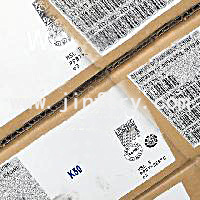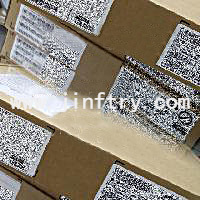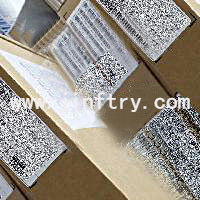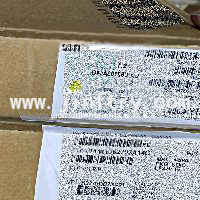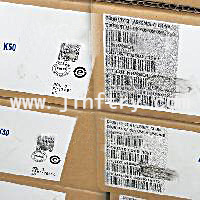In - Depth Analysis of Chip Resistor - Related Questions
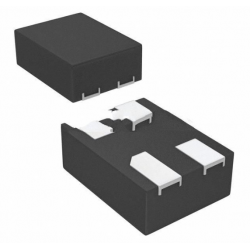
What is a Chip Resistor?
A chip resistor, also known as a surface - mount resistor, is an electronic component based on Surface Mount Technology (SMT). It forms an accurate resistance value through thick - film or thin - film processes, which involve printing or depositing resistance materials on a ceramic substrate, followed by precise processing such as photolithography and etching. Compared with traditional leaded resistors, chip resistors have no leads or very short leads and are directly mounted on the surface of a Printed Circuit Board (PCB) with solder paste. They offer significant advantages such as small size, light weight, and suitability for large - scale automated production, and are widely used in various electronic products, including mobile phones, computers, consumer electronics, and industrial control equipment.
Resistance Calculation and Standards of Chip Resistors
Resistance Analysis of 100 Chip Resistors
For the resistance marking of chip resistors, the three - digit and four - digit code methods are common. In the three - digit code method, “100” represents a resistance value of 10Ω; in the four - digit code method, “1000” indicates a resistance value of 100Ω. In practical applications, besides the resistance code, the resistance tolerance grade is also crucial as it directly affects the performance of the resistor in the circuit.
Conventional Resistance Value Series Standards
The conventional resistance values of chip resistors follow the E - series standards, mainly including the E6, E12, E24, E48, E96, and E192 series. The larger the series number, the higher the corresponding resistance accuracy:
• E6 series: With a tolerance of ±20%, the basic values are 10, 15, 22, 33, 47, 68, and they can be multiplied by 10 to the power of n (n is an integer), such as 100Ω, 1.5kΩ;
• E12 series: The tolerance is improved to ±10%, further subdividing the values based on the E6 series, adding new values like 12, 18, 27;
• E24 series: The tolerance reaches ±5%, further refining the resistance value range, covering values such as 11, 13, 16;
• E96 series: Suitable for high - precision circuits, with a tolerance of ±1%, such as values 100, 102, 105.
Resistance Calculation Methods
• Color - code Resistance Calculation: Resistance values are calculated by the values and multiples corresponding to different color bands, but this method is less commonly used for chip resistors;
• Numeric Marking Method:
◦ Three - digit numbers: For example, “103”, the first two digits 10 are significant digits, and the third digit 3 represents the power of 10, that is, 10×10³ = 10kΩ;
◦ Four - digit numbers: For example, “1002”, the first three digits 100 are significant digits, and the fourth digit 2 is the power of 10, that is, 100×10² = 10kΩ;
• Alphabetic Marking Method: For example, “R10” represents 0.1Ω, and “1R0” represents 1Ω.
Detailed Explanation of Chip Resistor Types
Flat Chip Resistor
The flat chip resistor is characterized by its flat shape, occupying extremely little space on the circuit board, and is particularly suitable for high - density circuit designs with strict space requirements.
Film Chip Resistor
Film chip resistors are made by depositing a very thin film of resistance material on a ceramic substrate. They have the advantages of high precision, low temperature coefficient, and good stability, and are often used in circuits with high requirements for resistance precision and stability, such as precision measuring instruments and communication equipment.
Flip Chip Resistor
Flip chip resistors are packaged using flip - chip technology, directly electrically connecting the active surface of the resistor chip to the circuit board. This connection method effectively shortens the signal transmission path, reduces parasitic inductance and capacitance, and significantly improves the high - frequency performance of the circuit, making it suitable for high - frequency and high - speed circuits.
Thick Film Chip Resistor
Thick film chip resistors are manufactured by printing a relatively thick resistance paste on a ceramic substrate and then sintering it. Due to their low production cost and wide resistance value range, they are widely used in cost - sensitive fields such as consumer electronics and industrial control.
Coding Rules of Chip Resistors
Chip Resistor Code
The common coding methods include the numeric code method and the color - code method. The numeric code method uses three - digit or four - digit numbers to represent the resistance value. For example, “100” (three - digit number) represents 10Ω, and “1000” (four - digit number) represents 100Ω. Although the color - code method is similar to that of ordinary resistors, it is relatively less common in practical applications due to the small size of chip resistors.
HS Code and HSN Code of Chip Resistors
The HS Code (Harmonized System Code) is an international standardized commodity classification coding system. Chip resistors are generally classified under item 8533. The specific code will be further subdivided according to factors such as material and application. For example, 85332100 may be applicable to certain specific types of chip resistors, but there may be slight differences in classification among different countries and regions.
Size Specifications of Chip Resistors
Common sizes of chip resistors are expressed in imperial units, including 0201, 0402, 0603, 0805, 1206, etc. For example, 0603 indicates a length of 0.06 inches and a width of 0.03 inches. Smaller sizes occupy less space on the circuit board but increase the soldering difficulty accordingly; larger - sized resistors have higher power - handling capabilities and better solderability.
Well - known Chip Resistor Manufacturers
• Murata: A leading Japanese manufacturer of electronic components, renowned for its high - quality and stable products, with a significant market share in fields such as communications and automotive electronics;
• KEMET: An American company that provides various types of chip resistors, trusted by the market for its advanced technology and reliable product performance;
• Vishay: With a rich product line, covering high - precision and high - power chip resistors, widely used in industries such as industry and healthcare;
• TDK: A Japanese company with strong capabilities in the field of electronic materials and components. Its chip resistors feature excellent temperature characteristics and miniaturized designs, suitable for consumer electronics, aerospace, and other fields;
• ROHM: A Japanese semiconductor and electronic component manufacturer. Its chip resistors are well - known for high reliability and precision, often used in power management and automotive electronic control systems;
• MELF: A South Korean manufacturer. Its chip resistors excel in miniaturization and high - frequency characteristics, suitable for portable devices such as mobile phones and smart wearables;
• Stackpole: An American brand, with the advantages of high cost - performance and customization capabilities, able to meet different customers' requirements for resistance parameters;
• Panasonic: A well - established Japanese company. Its chip resistors can withstand high temperatures and have a long service life, suitable for industrial and automotive electronics scenarios with high stability requirements;
• KOA Speer Electronics: An American company focusing on resistor technology research and development. Its chip resistors perform outstandingly in low - noise and high - stability aspects, often used in precision instruments and high - end electronic devices;
• Taiyo Yuden: A Japanese company that is good at applying advanced materials in production. Its products combine high performance and miniaturization, widely used in the communications and consumer electronics fields.
Comparison of Chip Resistors with Other Resistors
Chip Resistors vs. Surface - Mount Device (SMD) Resistors
Chip resistors are essentially a type of SMD resistors. SMD resistors are a general term for resistors using surface - mount technology. Chip resistors meet the requirements of surface - mount technology with their sheet - like shape, and the two are just different names from different perspectives.
Chip Resistors vs. Ordinary Resistors
• Shape and Structure: Chip resistors are sheet - shaped with no leads or very short leads and are directly mounted on the surface of the circuit board; ordinary resistors (such as axial - leaded resistors and radial - leaded resistors) have long leads and are installed in the holes of the circuit board by insertion;
• Installation Method: Chip resistors use SMT technology, which is suitable for large - scale automated production with high efficiency; ordinary resistors use Through - Hole Technology (THT), and the installation process is relatively complex with a lower degree of automation;
• Application Scenarios: Due to their small size, chip resistors are often used in high - density and miniaturized electronic products such as mobile phones and tablets; ordinary resistors are still used in circuits where space requirements are not strict, high - power - handling capabilities are required, or manual installation and debugging are convenient, such as repair parts for large - scale electronic devices.
Installation Process of Chip Resistors
Chip resistors are usually installed using the surface - mount process, and the specific steps are as follows:
1. Solder Paste Printing: Use a stencil to precisely print solder paste on the pads of the circuit board by scraping the solder paste;
2. Component Mounting: The chip resistors can be accurately placed on the pads by an automatic pick - and - place machine or manually. When placing them manually, ensure the accuracy of the resistor's direction and position;
3. Reflow Soldering: Put the circuit board into a reflow oven and control the temperature curve to melt the solder paste, achieving reliable soldering between the resistor and the circuit board. At the same time, strictly control the temperature to avoid soldering defects such as cold soldering and bridging.
Whether you are looking for standard specifications or have special customization requirements, as a professional agent, with our profound industry experience and technical accumulation, we provide you with a full range of chip resistor products and comprehensive technical support! Initiate an inquiry immediately via [Contact Information], seize the opportunity for cooperation, and jointly explore new development prospects!

